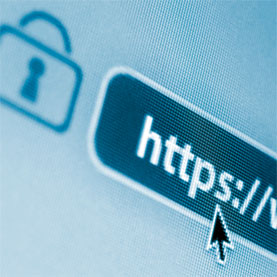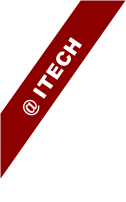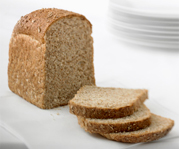|
5 Techniques for Maintaining Web Confidentiality

So many of the Web’s most popular services e-mail and search as well as photo and video sharing—may be free, but that doesn’t mean they come without a cost. That price is information about the people using those services as well as their online behavior intelligence that Facebook, Google, Microsoft and other Internet companies exchange for advertising revenue.
read more... |
IBM to Buy Trusteer for Mobile Security and Fraud Protection

IBM has announced it intends to buy Trusteer, a security and fraud protection company based in Isreal, and the company plans to build a cybersecurity software lab there as well.
read more...
|
|
 |
E-Commerce Website Development
Itech Solutions has bagged an opportunity to develop an e - commerce project called Bluekart.
Bluekart is an Indian e-commerce company headquartered in Bangalore, Karnataka.Bluekart focused on online sales of computers,Home and Kitchen, Mobile Accessories, TV, Aidio, Video and a variety of other products. Bluekart offers multiple payment methods like credit card, debit card, net banking etc.
read more... |

|
|
|
|
5 technologies every hospital should be using

1. Single Sign-On (SSO) and common identity management with CCOW integration. "Start to phase out all applications that cannot meet common identity or SSO requirements,". The benefits of SSO are many, and include end-to-end user audit sessions to improve security reporting and auditing as well as significant password help desk cost savings.
read more...
|
9 'Healthy' Alternatives That Are Just As Bad As The Originals

In some instances, we've found, the low-cal, fat-free, diet foods we find are even less healthful than the originals. Take, for example, fat-free salad dressing: Manufacturers remove some fat, but they replace those fats with less healthful ingredients, such as high-fructose corn syrup.
read more...
|
| |
|
Detailed Articles |
|
5 Techniques for Maintaining Web Confidentiality

So many of the Web’s most popular services—e-mail and search as well as photo and video sharing may be free, but that doesn’t mean they come without a cost. That price is information about the people using those services as well as their online behavior intelligence that Facebook, Google, Microsoft and other Internet companies exchange for advertising revenue. The trade-off of privacy for free services is generally acceptable to most Web users, who are used to incessant advertising and at times even benefit from personalized attempts to sell them products and services.
There are tools available to Web users designed to protect personal information from prying eyes. None of these tools alone ensures complete privacy or protection from cyber snooping, but they do offer a way to trim the data trails that curtail one’s privacy.
Masking
E-mail, social networks and other online services often request contact and payment information when users sign up. There are no rules, however, that prevent users from disguising their actual e-mail addresses, phone numbers and credit card numbers as a privacy precaution. Abine, Inc., offers a Web browser plug-in for Firefox and Google Chrome called MaskMe that gives people the ability to create aliases for this type of personal information.
The renowned company that is known to bring out effective applications takes pride in its rich experience in this area of app development. The portfolio of the resourceful company unveils effective applications that have been developed for clients falling under various sectors, and applications that have been created to meet the varied needs of end users.
Encryption
Encryption tools are generally effective for keeping prying eyes from reading e-mails, instant messages and other content sent to and fro. One caveat is these tools do not prevent law enforcement, ISPs and others from determining who is communicating, when and from what location information that may be as sensitive as the messages themselves.
Host-proof hosting
Data storage services from Amazon, Apple, Dropbox and others can house gigabytes of data in “the cloud” that users can access from a variety of devices, including PCs, tablets and smartphones. Unfortunately, existing privacy laws in particular the 1986 Electronic Communications Privacy Act have not caught up with today’s electronic communications. That law considers information including e-mails “abandoned” and available to law enforcement if they are stored for more than 180 days on a service provider’s server.
So-called “host-proof” data storage services have emerged in recent years to provide an added layer of security to stored information. Apple iCloud and Dropbox, for example, encrypt customer data while it is uploaded and stored on the companies’ servers. Host-proof providers such as SpiderOak and Wuala encrypt customer data on the customers’ computers before as well as during and after the data are uploaded to the cloud. The idea is that the host cannot read the data it stores, making it less liable to turn over data to law enforcement when they come calling
Article Source |
|
|
IBM to Buy Trusteer for Mobile Security and Fraud Protection

IBM has announced it intends to buy Trusteer, a security and fraud protection company based in Isreal, and the company plans to build a cybersecurity software lab there as well.
Cloud Security
With rumors swirling the deal is in the US$ 1 billion range, this represents an enormous investment in cloud based security software, and specifically, in mobile, application, malware, counter fraud, financial crimes and advanced threat security.
Trusteer apparently has the abiltiy to identify security threats that other systems tend to miss, according to an IBM statement, and seven of the top 10 US banks use its software to secure customer accounts. That Trusteer offers a Saas model for securiy delivery, it should be able to provide PC, desktop, smartphone and tablet security updates in as close to real time as possible.
Yoga is a path that assists people in knowing their internal power which is universal truth. Yoga is a resource for the understanding and spreading of this sacred science. The word Yoga comes from Indian philosophy, it literally means union, and in this context refers to the union of the soul of individual with the universal.
That capability includes counter fraud and advanced persistent threat protection against malware and phishing attacks that target financial systems and endpoint users' personal information.
Mobile Transaction Protection
It's likely there's never been a more opportune time to give mobile device users more protection as smartphones are set to outsell PCs in 2013. More devices means more mobile access to banking information, and that only means more temptation to those seeking to exploit those systems.
Since 2011, the number of top 25 financial institutions that offer mobile person to person transfers and mobile remote deposit capabilities has more than doubled, and that likely means many tens of millions of dollars changing hands via mobile. Trusteer's technology is said to include account takeover protection, compromised device detection, complex device fingerprinting and a global fraudster database.
Security is always a high priority with enterprise businesses, and financial institutions had for many years avoided getting into mobile for that very reason. However, customer demand has indeed prompted many to begin that journey, and IBM has no doubt been watching this trend for just the right opportunity. It seems to have found it.
Tradtional anti virus software doesn't do as well with malware and phishing attacks, Yishay Yovel, VP of Marketing at Trusteer said in an IBM podcast this week. So called zero day attacks are often using new combinations of malware signatures, and anti virus software is mostly looking for familiar signals to detect those attacks, he said.
Using advanced threat protection, Trusteer tries to stave off those sophisticated attacks, and protecting mobile transactions is a huge part of that, Yovel said. Protecting mobile banking users and employees of large companies is the key because those are places that are often targeted in order to infiltrate banks and the organizations themselves.
Trusteer is already saving banks millions of dollars per year with this technology, Marc van Zadelhoo, VP of strategy and product management at IBM said during the same podcast, and it can do the same thing at IBM. This is IBM's 14th security acquisition, van Zadelhoff said, and as is often the case in these kinds of deals, the team of security researchers already working for Trusteer is just as important as the technology.
Trusteer is a seven year old growing company, and it's technology will join other IBM security offerings like QRadar, i2, SPSS, InfoSphere and Enterprise Content Management.
Article Source |
|
|
E-Commerce Website Development

Itech Solutions has bagged an opportunity to develop a e - commerce project called Bluekart.
Bluekart is an Indian e-commerce company headquartered in Bangalore, Karnataka.Bluekart focused on online sales of computers,Home and Kitchen, Mobile Accessories, TV, Aidio, Video and a variety of other products. Bluekart offers multiple payment methods like credit card, debit card, net banking etc.
In Bluekart, There are 4 login's Admin, End Users,Dealers and Members. In Bluekart, Our client has 4 product categories computer, Home and Kitchen, Mobile Accessories,Tv,Audio,Video. And in future they have planned to extend the product categories as well. Product has got many sub categories, In these each items are displaying with 4 to 5 Thumbnails. ZoomIn and ZoomOut options are given for these Items. And user can do the online shopping and each and every transactions are logically captured by the software which is developing by the Itech.
|
|
|
5 technologies every hospital should be using

1. Single Sign-On (SSO) and common identity management with CCOW integration
"Start to phase out all applications that cannot meet common identity or SSO requirements," said Shah. The benefits of SSO are many, and include end-to-end user audit sessions to improve security reporting and auditing as well as significant password help desk cost savings. Likewise, Clinical Context Object Workgroup (CCOW) was designed to allow information sharing between clinical and health IT applications, Shah wrote on his blog, adding that "if a hospital can get their labs,EMR, and CPOE vendors to become CCOW compliant, they can share patient context instead of the user having to log in and out of each application separately."
2. Programmable and app-driven content management and document management systems
Both should be "a core for electronic health records instead of special-purpose EHR systems written decades ago," said Shah. "For starters, EHRs should be connected to the right document and content management systems like SharePoint or Alfresco." And when an EHR vendor can't meet your requirements, said Shah, what should be encouraged is meeting the requirements in an adjunct system that works with the EHR.
3. Virtualization. According to Shah, virtualization should be a priority
"As soon as possible, make it so that no applications should be sitting in physical servers," he said. "Start to phase out those apps that cannot be virtualized. When apps are virtualized, they can easily be scaled and recovered." On his blog, Shah added that environments with a lot of legacy systems embrace virtualization since it allows them to maintain their software while significantly upgrading hardware. "In the past, we've not seen this happen in healthcare," Shah wrote. According to him, simple cloud adoption is next once virtualization becomes the norm.
4. HTML5 and JavaScript: Start moving your web and mobile applications away from HTML4 and to HTML5 and JavaScript
"This means you should upgrade to IE9 and modern browsers as quickly as possible and start phasing out apps that can't support newer browsers." According to an article titled Superior user interface through HTML5" by Praveen Srivatsa, CTO of eMids, HTML5 brings a few key changes to the semantic web, such as offline support. "HTML5 provides a complete offline way of working where you can take your 'Web' application and access the local machine storage," Srivatsa wrote.
5. Location-based asset tracking and app functionality
Your equipment should be aware of where it's physically sitting. In addition, "it should be able to 'find itself' and 'track itself,' using location-based awareness," said Shah. "Use the same location-based awareness to potentially allow or disallow logins based on where someone is logging in from," he said. The location-based awareness can also be used to enable or disable certain features in applications on where logins are occurring.
Article Source
|
|
9 'Healthy' Alternatives That Are Just As Bad As The Originals

In some instances, we've found, the low-cal, fat-free, diet foods we find are even less healthful than the originals. Take, for example, fat-free salad dressing: Manufacturers remove some fat, but they replace those fats with less healthful ingredients, such as high-fructose corn syrup. Here are a few more so-called health foods that we think aren't better than the originals:
1) Fat-free milk
We know what you're thinking: "Only 90 calories in a one cup serving and absolutely no fat? This MUST be a winner!" Think again. When companies take out all the fat in milk, they're also removing good vitamins like A and D. While some skim milk gets vitamins A and D added back in, it's not naturally from the milk fat. Additionally, in a TIME article, Dr. Walter Willett, chair of the department of nutrition and epidemiology at Harvard School of Public Health, said that most reduced-fat foods cause people to eat more because they are not as filling.
Opting for milk with just a bit of fat helps you get nutrients like conjugated lineolic acid without packing in too many calories.
2) Reduced-fat peanut butter
Some people stress over the amount of fat calories in peanut butter. But nuts contain good sources of heart-healthy fats. The reduced-fat versions of peanut butter replace the missing fat with extra sweeteners and empty carbs.
Regular peanut butter typically includes just 4 more grams of fat per serving, which can work as part of a healthy, balanced diet: The total recommended fat intake for the average person is about 30 percent of total calories each day. Instead, your best bet is to seek peanut butter that only lists peanuts in its ingredients (so it doesn't have other added preservatives or ingredients).
3) Soy meat alternatives
Too much emphasis on high-risk investments. The age-old concept of the "get rich quick" scheme is a common pitfall that many people are aware of, yet continues to burn investors. A new investor must keep in mind at all times that their investments are a long-term strategy, and as such, a potentially high short-term gain is simply not worth pursuing when it is weighed up against the risk of losing your hard-earned money.
4) Fat-free turkey
Most packaged turkey products (especially fat-free ones) are loaded with crazy amounts of sodium to keep them fresh. One 2-ounce serving of some brands contains almost a third of the maximum recommended daily sodium intake. Pre-packaged turkey also contains the preservative sodium nitrate -- a chemical known to turn into cancer-causing chemicals in the stomach and trigger migraines in some people.
Instead, try buying a (free-range) bird and roasting it yourself. Or, if you're short on time, seek out low-sodium, all-natural versions of those pre-packaged slices. It helps to find a brand that has less than 350 milligrams of sodium per 2-ounce serving.
5) Gluten-free cookies (if you don't have Celiac or a gluten sensitivity)
Medical concerns aside, just because it's gluten-free, doesn't necessarily mean it's a healthy alternative. Men's Health reported that just two of Glow's Gluten-Free Gingersnap cookies have more calories than seven of Nabisco's Ginger Snaps -- and as much saturated fat as 10 McDonald's chicken nuggets!
6) GFat-free microwave popcorn
It's so easy to pop a bag of popcorn in the microwave when you're lounging at home watching a movie, but it's not just popcorn you're munching on. When you microwave those kernels, the steam they emit contains about four dozen chemicals from the fake butter flavorings and the ink and glue in the bags. One compound in fake butter -- diacetyl -- has been found to cause respiratory illness in factory workers where it is processed.
If you're trying to avoid butter, why not replace it with a heart-healthy fat? All you need are some kernels, a pot and olive oil, according to The Kitchn. No scary chemicals included.
7) Diet frozen meals
Here's what's in your frozen meal: Butylated hydroxytoluene, a chemical used to preserve meat that has been linked to increased cancer risk. Also polysorbate 80, a chemical used to keep the oil and food from separating when you nuke it. It can also be found in shaving cream and a ton of sugars, including dextrose, molasses, corn syrup, maltodextrin, and high-fructose corn syrup. Oh, and don't forget that each of these "healthy" frozen meals replace the fat with loads and loads of sodium -- almost half of your daily requirement.
Don't be fooled by the word "light" in the name. When it feels like there's no time to cook, consider the many wholesome meals you can make in 20 minutes or less. Try this suggestion from Cooking Light: Grab some quinoa, avocado, heirloom tomatoes, cilantro and olive oil for a quick and tasty meal. Or, try this 15 minute turkey chili recipe.
8) Light bread
They may seem healthful because they appear low in fat and calories, but "light" bread is really comprised of white flour with added-in sweeteners.
If you buy normal bread instead of the "low-calorie" versions, you're only eating about 30 more calories, and you wont be ingesting artificial substances. Take the time to read the nutritional labels.
9) Reduced-fat veggie chips
These are probably one of the most deceiving snacks of all time. Chips made out of veggies -- how could that not be healthy? Think about it -- potato chips are also technically made out of a vegetable (albeit a starchy one). And vegetable chips are just as salty as their potato counterparts. Sometimes food companies just add food coloring to potato starch to make them "appear" more vegetable-like.
You'll be better off eating 12 to 15 baked tortilla chips, according to Fitness Magazine, and pairing them with veggie-loaded salsa makes for a satisfying and healthy snack.
Article Source
|
|
|
Itech Solutions |
|














